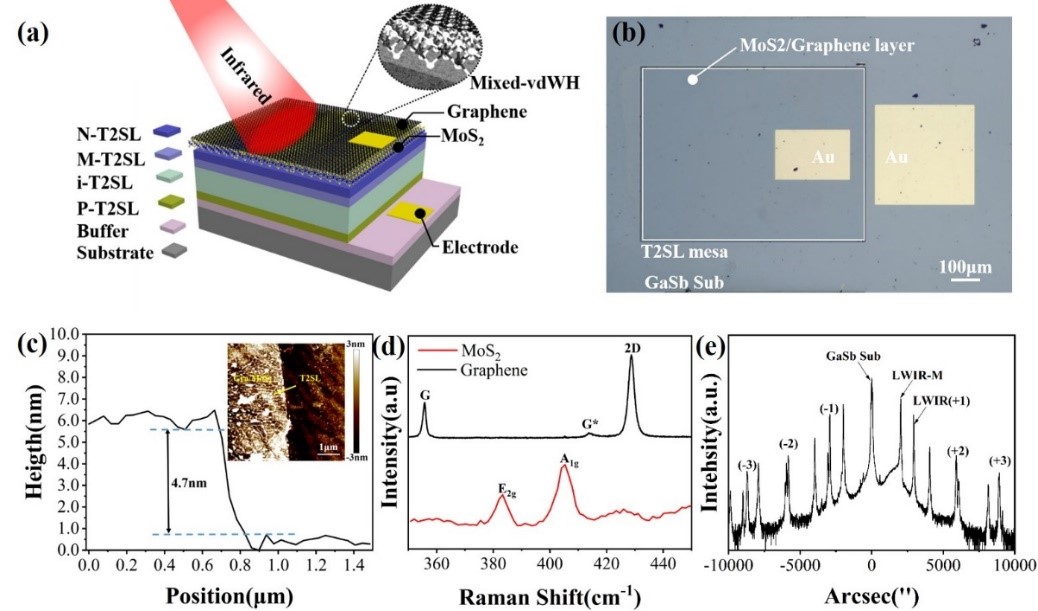The infrared detectors used in thermal imaging find extensive applications across various sectors, including industry, security, search and rescue, medical imaging, surveillance, scientific research, meteorology, climatology, and astronomy. Currently, high-performance infrared imaging technology relies primarily on epitaxially such as small bandgap alloy mercury cadmium telluride (MCT), InAs/GaSb type II superlattice (T2SL), and quantum well infrared photodetector (QWIP).However, these systems operate at low temperatures and necessitate expensive and bulky cryogenic systems, posing challenges for the advancement of rapid and compact infrared detection systems. Therefore, designing an infrared photodetector with low noise current is of paramount significance to elevate the operating temperature of the device and alleviate the cooling burden on the infrared detection system.
Recently, the Micro-Nano Manufacturing and System Integration Research Center of our institute published a research progress titled "Ultralow-Noise MoS2/Type II Superlattice Mixed-Dimensional van der Waals Barrier Long-Wave Infrared Detector" in the journal "ACS Applied Materials & Interfaces". The paper proposed a MoS2/Type II superlattice mixed-dimensional van der Waals barrier long-wave infrared detector (Mixed-vdWH), which uses the high valence band barrier of MoS2 to effectively suppress multi-particle diffusion. The mixed barrier significantly reduces the dark current by two orders of magnitude while maintaining good noise suppression performance at high temperatures. The quality factor (D*) of this long-wave device reaches 4×1010 cm·Hz1/2 at 77 K. This integration strategy combines the unique properties of two-dimensional layered materials with the mature processing technology of traditional 3D semiconductor materials, providing a promising strategy for their large-scale integration.

Figure 1. Mixed-vdWH Device Structure and Material Characterization
The first author is Lei Xiao, a doctoral student from the Micro-Nano Manufacturing and System Integration Research Center, and senior engineer Tai Sun is the corresponding author.This research work provides theoretical basis and technical means for the design of a new third-generation photoelectric detection system with high integration, high sensitivity, multi-color, and low power consumption. It has been supported by the National Natural Science Foundation, the Chinese Academy of Sciences "Light of the West" Program.
Link to relevant paper: https://doi.org/10.1021/acsami.4c00956


